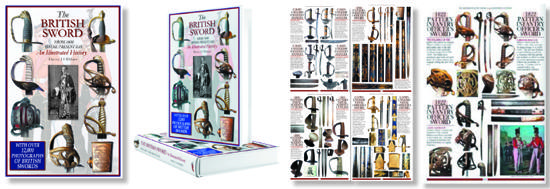THE ENGLISH INFANTRY HANGER was a popular form of short sword in mid-17th Century England and carried by both civilian and soldier alike. They are also commonly described as hunting swords and served many functions, being utilised as a handy sword of defence for the civilian about town and a good, close combat sword in the field of battle. Although the short infantry or hunting hanger, was a common sword type throughout Europe, a distinctively English version began to emerge in the mid-17th Century.
It is noted for its relative consistency in design and styling. The English hanger typically consists of two shell guards, with a larger, scallop-shaped guard to the front and a smaller, upturned version to the rear. Better quality examples are frequently decorated with inlaid silver, dot and trellis patterns to the shell guard, hilt bars and knucklebows. Many have chiselled iron hilts, sometimes pierced and decorated in the manner of mortuary or Cavalier hilts. The decoration is frequently continued to the knucklebow, which is then attached to a scrolled pommel by means of a large and prominent iron screw. Grips were made from a variety of materials including staghorn, bone and occasionally, ivory. Blades are short and wide, straight or slightly curved and single or double-edged (most being double-edged towards the point). Sawback blades are known and probably indicate a hunting rather than infantry or civilian role although it could be utilised as a military weapon if required. This was the time when armies could be of a makeshift nature and a wide and sometimes eclectic assortment of edged weaponry taken into the field of battle, some little more than agricultural implements. English made hangers from the first quarter of the 17th Century were also produced with brass bird or animal-head pommels and simple, fluted shell guards and iron grips. The large, coiled hilt quillons are very similar to those found on English duelling rapiers of the period.
Many hanger blades were imported from the continent, particularly Germany, but a considerable number were also manufactured in England. A famous example of an indigenous maker of this sword type was the Hounslow sword manufactory, an ill-fated and short-lived sword making venture located just outside London at Hounslow Heath. Employing both English and foreign (mainly German immigrant) sword makers, it was known particularly for the production of iron and brass-hilted hangers and broadswords.
The founder of the factory was Benjamin Stone and under his auspices, large quantities of swords were produced for King Charles I during the 1630’s. The factory was subsequently closed by the Parliamentarians during the early years of the English Civil War as they distrusted Stone’s Royalist sympathies. Other Hounslow sword makers (and names frequently noted on English sword blades of the time) include Joannes Kindt, Johannes Hopp(i)e and Joseph Jenckes. The name Hounslow is also engraved directly onto blades and there are a number of spelling variations, including “Hunslow”, “Hounslo” and “Hounsloe”. They also engraved a “running wolf” mark to their blades in imitation of contemporary German (Solingen) sword makers.
A number of high quality Hounslow hangers dating from the time of the English Civil War were thought to have been specially manufactured for officers of the Trained Bands of London, a militia regiment formed on a county basis and staffed by freeholders, householders and merchants. Militia officers are likely to have purchased their own hangers and from the superior quality of some surviving examples, the cost would have been quite considerable.
At the end of the 17th Century, immigrant German sword makers also established an extensive sword making community in Shotley Bridge, County Durham, in the north of the country. The abundance of iron ore deposits and the fast flowing River Derwent created the ideal conditions for sword production. A number of infantry hangers are known to carry the name of “SHOTLEY BRIDG” on their blades.
One of the former members of the Hounslow sword making enterprise, Hermann Mohll, later came back to England from Germany after the failure of the Hounslow factory in 1658, and began working at Shotley Bridge, which in 1691, changed its name to the Hollow Sword Blade Co. and began importing and manufacturing ‘hollow blade rapiers’, a forerunner of the 18th Century smallsword.
It was here that we later see the development of a hollow-ground or triangular-shaped blade that greatly enhanced the strength and durability of the burgeoning smallsword type in the late-17th and early 18th Century. Unfortunately, in 1702, Mr Mohll was arrested for illegally smuggling 100 hollow-ground sword blades from Germany and the Shotley Bridge sword mills were abruptly closed.
Hermann Mohll must have extricated himself from this local difficultly as he subsequently anglicised his name to Mole and the business reopened in 1716, eventually being sold to another noted sword maker, William Oley, in 1724, when his son, William, finally moved the sword business to Birmingham where it became a famous and prodigious sword supplier to the British Army during the 19th Century.
© Harvey Withers Military Publishing, 2024
Taken from The British Sword – From 1600 to the Present Day – An Illustrated History by Harvey J S Withers – 12,000 full colour photographs – 884 pages
For more details please click on the images.


